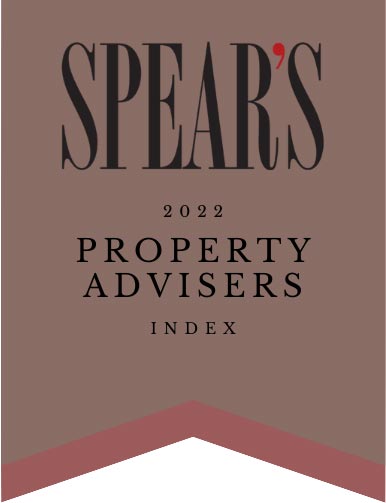Today, fast-paced solutions and access to funds delivered in a timely manner provides our clients with flexibility. Speed, agility, and bespoke solutions underpin our bridging loan service.
Bridging, development exits, refurbishment and short term buy to let loans are all possible uses for bridging loans. We will work with our lenders and exclusive private funders to help solve your immediate access to funds. We facilitate varied and often complex finance requirements for a range of clients looking to capitalise on a timely opportunity across multiple property assets whether its residential, commercial property or land.
What Is A Bridging Loan?
A bridging loan, also known as an interim finance loan, swing loan or bridge gap loan is a useful form of short term flexible lending. Loan terms are typically set up quickly and normally for periods up to 12 months. A bridging loan offers more flexibility over traditional underwriting due to the fact there are fewer requirements for onboarding and no opening of bank accounts. The flexibility in the arrangements afforded by bridging loans can be attractive for individuals, companies requiring short-term finance for residential or commercial projects.
How Does A Bridging Loan Work?
- A large bridging loan may be the best financial option if you are experiencing any of the following scenarios:
- You wish to buy a property at auction, and you need the funds in order to secure the purchase with the auctioneer
- You haven’t yet sold your property, and you wish to buy another property before doing so
- You are struggling to secure a loan with another lender because the property is in disrepair, or needs extensive renovations
- Your preferred mortgage lender is taking too long to process your application, and you need faster access to the capital
Using bridging loans for a residential property is a very common scenario. Bridging loans can be used to help get a property transaction over the line. Obtaining property funding using a bridging loan can often save clients from a make-or-break scenario.
Large Mortgage Loans are well-versed in helping clients secure finance for home purchases which may include retirement homes or second homes overseas, snapping up auction properties, site acquisitions, property refurbishments, tax payments and probate. We have sourced bridging finance for almost every type of property in almost every scenario.
Large bridging loans offered by Large Mortgage Loans’s lending partners can secure a bridging loan against your property or other assets. We typically work with loans that range from £150,000 to £25 million. You may be surprised to know that the security property does need not be in the same condition as it would under other mortgage or loan arrangements. Interest rates tend to be calculated monthly, due to the short-term nature of the loans, and can vary considerably, currently between 0.48% to 2% per month. Speed of transaction is one of the key benefits of a bridging loan, and funds can be provided within a matter of a one to two weeks, compared with 8-12 weeks or more for residential mortgage loans.
Personal and commercial bridging loans are available and are not as dependent upon credit or income history as other finance sources, such as mortgages. The flexibility arises as the loan can be used to ‘bridge the gap’ until funds are received from another source, for example completion of a house sale, or until a longer-term funding solution is negotiated.
Many bridging loan facilities do not have exit fees on early repayment (though this will be one of the important checks we carry out for you), and often interest charges can be added into the loan amount and paid only when the loan is redeemed. We are confident that we can work with you to find the best bridging loan for you.
Can I Get a Bridging Loan?
Bridging loans are available to individuals, sole traders, partnerships and limited companies.. Lenders tend to impose a minimum age of 18 years for borrowers. There isn’t a maximum age limit, however some lenders may occasionally enforce a limit if they feel that it is justified.
While you may understandably assume that a clean credit history would be vital to take out a quick bridging loan, it is in fact only security held in the form of a property or other collateral which is required to obtain a bridging loan. Lenders will normally ask that you either currently have equity in your property, or whether you are able to put down an initial deposit towards the purchase.
Largemortgageloans.com works with multiple jurisdictions, thus enabling us to provide flexible solutions for clients living overseas. It doesn’t matter if you’re a domestic or overseas customer, we have an extensive lending circle and understanding of intricate multi—jurisdiction knowledge to support your application. Our lines of communication are always open, and we are on hand to assist clients in international time zones.
What Are Open and Closed Bridging Loans?
Open bridging loans are extremely flexible, in that no repayment date is fixed, but they will normally be due for settlement at twelve months or then reviewed and or renewed for a further twelve months.
Closed bridging loans are agreed with a fixed repayment date, usually within 1-12 months of taking the loan. This kind of bridging loan is the norm when you have exchanged contracts on a property purchase but are waiting for completion. In this scenario, average bridging loan interest rates will be lower than for open bridging loans.
Whether a bridging loan is open or closed, the lender will need evidence of an exit strategy – in other words how the loan will be repaid – for example using the equity from a property sale, a mortgage or other funding solution. Lenders may favour applicants who also have a back-up plan, in case the preferred repayment strategy fails, and Large Mortgage Loans will be happy to offer you full professional advice in this regard too.
What Are First Charge and Second Charge Bridging Loans?
When a bridging loan is taken out, a ‘charge’ is placed upon the property or other asset used to secure the loan. This legal agreement clarifies which lenders will be repaid first if a borrower cannot repay their loan on time. Our personalised and professional financial advice is of course designed to ensure that these situations rarely arise.
To clarify, however, if the property or asset is mortgage free, or the bridging loan has paid off the mortgage in full, then a first charge loan will be taken out – in other words in the case that a property has to be sold, then the bridging loan will be the first loan to be repaid out of the proceeds.
If there is a mortgage on the property, however, the bridging loan will be a second-charge loan, meaning that if the property has to be sold, the original mortgage will be paid off first, followed by the bridging loan.
What Are Regulated and Unregulated Bridging Loans?
Regulated bridging loans are authorised and regulated by the Financial Conduct Authority, whereas unregulated bridging loans are not. Financial Conduct Authority regulation provides protection for you as a consumer. Lenders who provide regulated bridging loans are also able to provide unregulated facilities, depending on the circumstances of the borrower. It is to be noted that lenders authorised by the Financial Conduct Authority to provide regulated bridging loans are far outnumbered by those providing only unregulated bridging loans. Part of the Large Mortgage Loans service is to help you navigate the marketplace with confidence, to find the bridging loan that will work best for you.
How Can A Regulated Bridging Loan Work for Me?
Regulated bridging loans can provide fast, flexible support in a wide variety of circumstances, including: buying a new home before an existing house sale has completed, smoothing a break in a property chain, buying a retirement home or a second home abroad, purchasing a house at auction or an investment property, restoring or building a property, raising funds for business use or to repay a debt, improving, preventing bankruptcies or stopping property repossessions.
Regulated bridging loans are taken using the security of residential houses, flats or building plots, which are your or your immediate family’s residence, or planned future residence. Some lenders also require a regulated agreement to be offered if you used to live at the secured property. The property offered as security for a bridging loan can be in a poor state of repair, and potentially not acceptable for the purposes of a traditional mortgage, which adds to the flexibility of this product.
How Can an Unregulated Bridging Loan Work for Me?
When considering an unregulated bridging loan, Large Mortgage Loans advise that you borrow from a reputable lender, preferably one which is FCA authorised. Unregulated bridging loans can provide multiple advantages, including immediate loan decisions, rapid provision of terms, and fast funding. Terms for repayment of up to 36 months can be achieved. No proof of income is usually required, and loan to value ratios of up to 100% of open market value of the secured property can sometimes be offered. All types of property and land, and complex financial and personal circumstances, can be considered in these agreements, and our advice will help you to realise the opportunities available in your particular circumstances.
The loans provided can be used to purchase or refinance commercial or semi-commercial properties, residential properties to be rented out (or refurbished then sold), farmland or development land, with or without planning permission. Unregulated bridging loans can be used in a variety of situations, including maintaining a place in a sale chain, property purchase at auction, property development, renovation projects, payment of tax liabilities, business cash injection, taking advantage of a bargain property purchase, and so on.
Unregulated bridging loans are taken using the security of residential investment properties, including buy-to-let properties, properties with multiple occupants (HMO properties), commercial and semi-commercial properties, development land, land without planning permission and agricultural land. The key is that the property used as security in unregulated loans will never be occupied by the borrower or members of their family, thus avoiding any risk of losing a home. For example, if you have a low income, but a large property asset as well as other assets, then a bridging lender would be more comfortable lending a sum secured across all of the assets, in a way that a traditional lender would be unlikely to consider.
What Is the Process of Obtaining a Bridging Loan?
The aim of Large Mortgage Loans.com is to provide your bridging loan solution as quickly and easily as possible, whilst ensuring the process is entirely bespoke and tailored to your particular needs and circumstances. Property buyers often ask us “How does a bridging loan work?”. We have outlined the process to demonstrate how a quick bridging loan can be offered in five easy steps.
- initial enquiry to Large Mortgage Loans – Advice is offered, on a personalised basis and in liaison with our team of trusted financial and legal partners. We will help you decide exactly what you need from your bridging loan, how much and for how long, and then collect any information needed, including how much your property or asset is worth, and details of its current mortgage and equity status. Armed with this information we can provide a loan decision in principle and indication of terms.
- Loan acceptance and detailed bridging loan quote – This is usually provided within one to two hours of the decision in principle. Large Mortgage Loans aims to provide at least one, and usually more, detailed market-leading bridging loan quotations.
- Valuation – Once the terms have been agreed, Large Mortgage Loans will arrange for a valuation of your security property or asset, although on many plans a valuation is not required.
- Legal works – We can often instruct legal work at the same time as the valuation, to minimise delay. If preferred, the legal works can be instructed after the valuation, or closer to the time when the bridging loan funds are to be provided.
- Funds – You are one step closer to bringing to fruition the project you’ve dreamed of.
How Much Can I Borrow with A Bridging Loan?
The amount borrowed will depend on the loan-to-value (LTV) ratio represented by the property or asset offered as security. Depending on the lender we choose with you, maximum loan-to-value ratios currently vary between 60% to 100% and higher loan to values(100%) are achieved with additional security. Loan amounts start from £150,000, and there is no limit on the maximum upper loan figures that we operate with.
How Much Does A Bridging Loan Cost?
We understand that it can be daunting to contemplate extra costs, just when your project is at a critical point. At Large Mortgage Loans we aim to give you the reassurance that the loans we recommend are tailor made for your particular circumstances – and the confidence that we are working with you to safely realise your personal and financial goals. The goal is to ensure that the short term costs are more than compensated for by the long-term financial and personal benefits.
Bridging Loan Rates
Use our bridging loan calculator to give you a rapid and accurate assessment of the overall cost of your loan, and how the costs will be charged to you, before you make your decision.
Large Mortgage Loans’s works with a myriad of lenders and private banks to negotiate the best possible loan terms and, equally importantly, competitive rates. Bridging loans are priced monthly, rather than annually, because they are likely to be taken out for short periods only. The flexibility and immediacy they offer is counterpointed against the higher interest rates, which can prove considerably higher on an annual percentage rate (APR) basis than normal residential mortgages. Currently monthly bridging loan rates can be offered between 0.48% and 2%, depending on the lender and the terms of the loan agreement drawn up for any particular client. Sometimes a variable rather than a fixed rate can be offered, often at a lower starting rate, but with the added risk of upturns in rates at a later stage of the loan agreement.
Your Large Mortgage Loans advisor will also provide you with complete clarity as to whether the following fees will be included in your bridging loan arrangement, and how these are paid:
– Set-up- fee (which can be up to approximately 2% of the loan amount)
– Exit fee (often not charged, but can be approximately 1% of the loan amount on early repayment)
– Administration or repayment fees (a payment for completion of paperwork at the end of your bridging finance)
– Legal fees (lender’s legal fees, usually charged at a set rate)
– Valuation fees (for the surveyor to value your property as security)
– Financial advisor fees (for the advisor’s work in helping you choose the best bridging loan for you).
How Do I Repay A Bridging Loan?
A clear exit route, in other words repayment of the loan, is always part of the agreement drawn up when taking out a regulated bridging loan. This is usually repayment on sale of a property, but some bridging loan lenders will also accept refinance. In this case the refinance option must be made clear on setting up the arrangement, for example proof of an offer of remortgage once a self-build home has been completed. Providing clarity on an exit route you are comfortable with, is an important part of the comprehensive service provided by Large Mortgage Loans.
What Are the Alternatives to A Bridging Loan?
Advice is available from Large Mortgage Loans on alternative finance arrangements, for example remortgaging your current home with a buy-to-let mortgage, and then using the equity released to purchase a new home or using a Lombard loan secured against share portfolios etc.
The Best Bridging Loans
Largemortgageloans.com are unparalleled in navigating a global network of over 300 finance providers, including high street names, private investors, small building societies and specialist private banks. In addition:
- We obtain quick decisions for our clients
- We offer a fast, personal service
- We are a member of the NACFB
- We have access to FCA-regulated bridging loan providers;
- We provide creative solutions for sophisticated financial profiles;
Please note that the Financial Conduct Authority does not regulate certain aspects of bridging loans and/or finance
Your home or property may be repossessed if you do not keep up repayments on a mortgage or other debt secured on it.


























